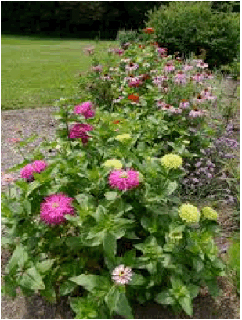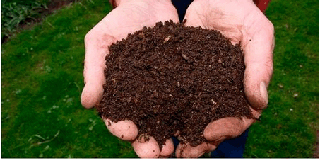
Well, I’m rather regretting harping on about water in last month’s column. No sooner I did, then we had apocalyptic rain for a few weeks. Sorry, peeps. However, erratic this August has been, and while the butts and tanks are now reasonably full again, we have been reminded of how hot it can get, even down here in the balmy South West. I’ve been watering prized plants and pots again in the last week or so and keeping an eye on my cut flower and veggies for signs of stress. I think, forget about dates, months, and preordained routines for the time of year – vigilance is the new order wherever we are in the gardening year.
Summer is almost over and our gardens are starting to look a little tired, but autumn is not quite here, despite some of the very dewy mornings we have had recently. It’s a sort of limbo time, when we gardeners are not quite sure which way to lean. Here are a few things I would recommend.
As someone who has been cutting and selling flowers all summer, it is time to look at which ones I can keep going into the autumn to extend the season. The helichrysum (everlasting flowers) have been spectacular, as have the calendula, chrysanthemums are just kicking into full swing, and dahlias (earwigs aside, blighters) are wonderful. But, I am asking them to work really hard by constantly cutting and forcing them to put out more flowers. I have been feeding with a liquid seaweed, but it’s now time or something with a bit more oomph.
 Depending on where you are in the season and how quick a reaction you want, there is a range of ‘Poos’ at your disposal. One of the fastest acting, and ideal for a top up on flowers and veggies this time of year is chicken manure, preferably organic. I have used pelleted, which is great, but this year and last, I have used the powdered version. It can be applied very locally around the base of a plant and watered in, or mixed into a can of water and added that way. Give it a week or two, and your plants will leap forward again.
Depending on where you are in the season and how quick a reaction you want, there is a range of ‘Poos’ at your disposal. One of the fastest acting, and ideal for a top up on flowers and veggies this time of year is chicken manure, preferably organic. I have used pelleted, which is great, but this year and last, I have used the powdered version. It can be applied very locally around the base of a plant and watered in, or mixed into a can of water and added that way. Give it a week or two, and your plants will leap forward again.
The other way to keep your plants going is to deadhead like fury as well. It might seem a never ending task, but really, it is good for you, to extend your garden’s pulling power and for the plants. You can always pick up some bargains at this time of year in garden centres if you have any really obvious gaps, but do make sure you water well on planting and in subsequent weeks. Otherwise, your plant will not be established enough to see it through a wet Cornish winter.
It is is tempting to load up on all the lovely daisy-shaped prairie flowers now – echinacea, helenium, rudbeckia, asters – but be aware that the fancy coloured echinacea in particular aren’t the hardiest of plants, so may not make a reappearance next year. Asters, however, are as tough as old boots, those that do not suffer from mildew anyway, and should do you proud for years to come.
This is also a very good time to plan some shrub or evergreen hedge planting, if you have gaps to fill, or are planning a wholesale change in an area. I know I am. As we move into autumn (September and October principally) the soil remains warm and, hopefully, moist long after the air temperatures have started falling. This is an idea time to plant shrubby material, which will continue to develop root systems after the top growth has eased back for the year. This gives your plants a really good head-start for next year.
 And of course, don’t forget to harvest your crops (apples, chillis, peppers, tomatoes, beans and sweetcorn are having a bumper year here at Calendra!) and support your local village markets and shops by buying locally grown produce. Whatever your feelings about leaving the EU, (not going there!) one beneficial side effect is that more people are becoming locally and seasonally focused, me included.
And of course, don’t forget to harvest your crops (apples, chillis, peppers, tomatoes, beans and sweetcorn are having a bumper year here at Calendra!) and support your local village markets and shops by buying locally grown produce. Whatever your feelings about leaving the EU, (not going there!) one beneficial side effect is that more people are becoming locally and seasonally focused, me included.
The more we can support local producers, cut down the air miles, and source fresher local produce, the better that has to be good doesn’t it? The Roseland and surrounds now has 4 Saturday markets a month – Veryan on the first Saturday of the month, Tregony on the second. Pop in and see!
Helen Robins
